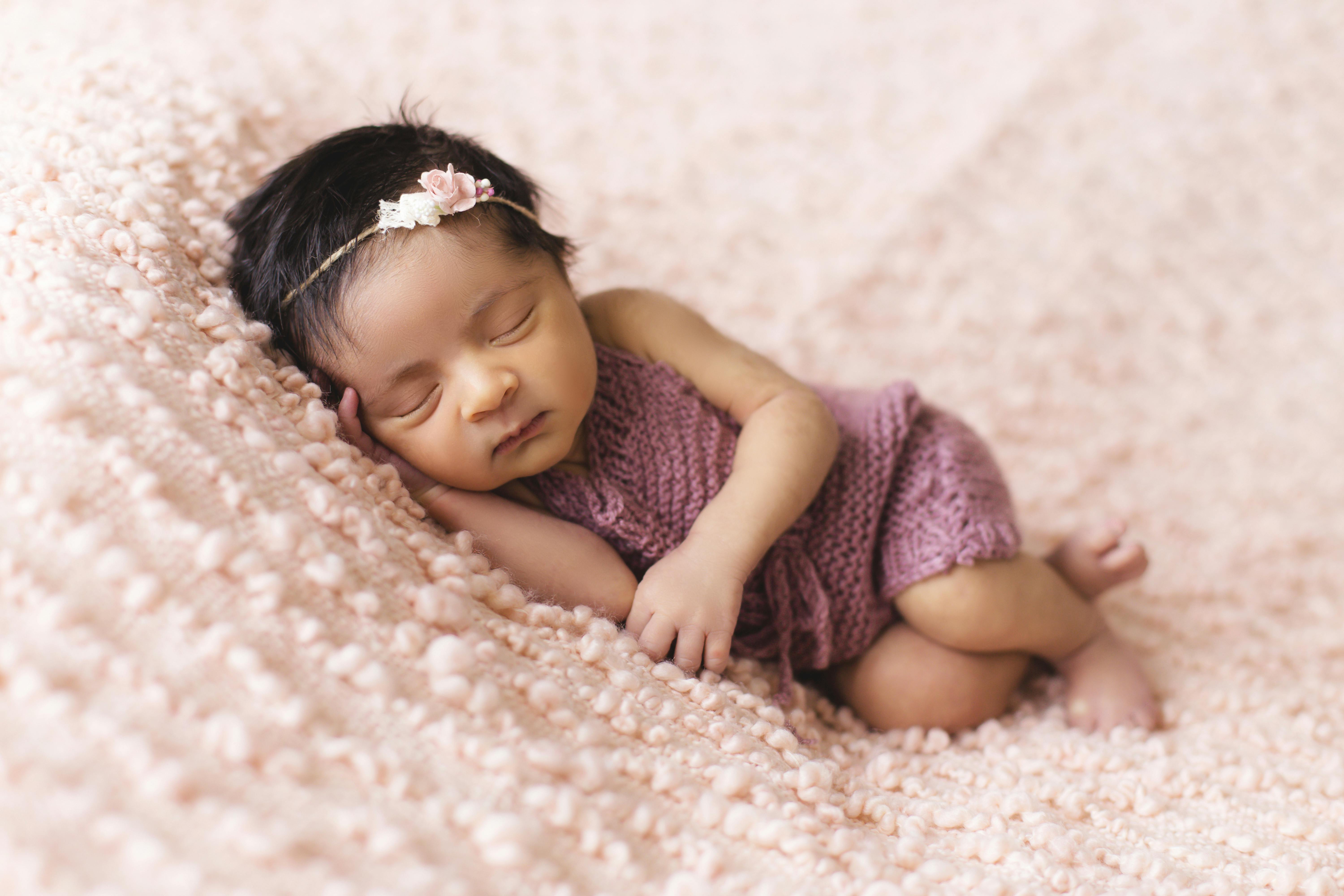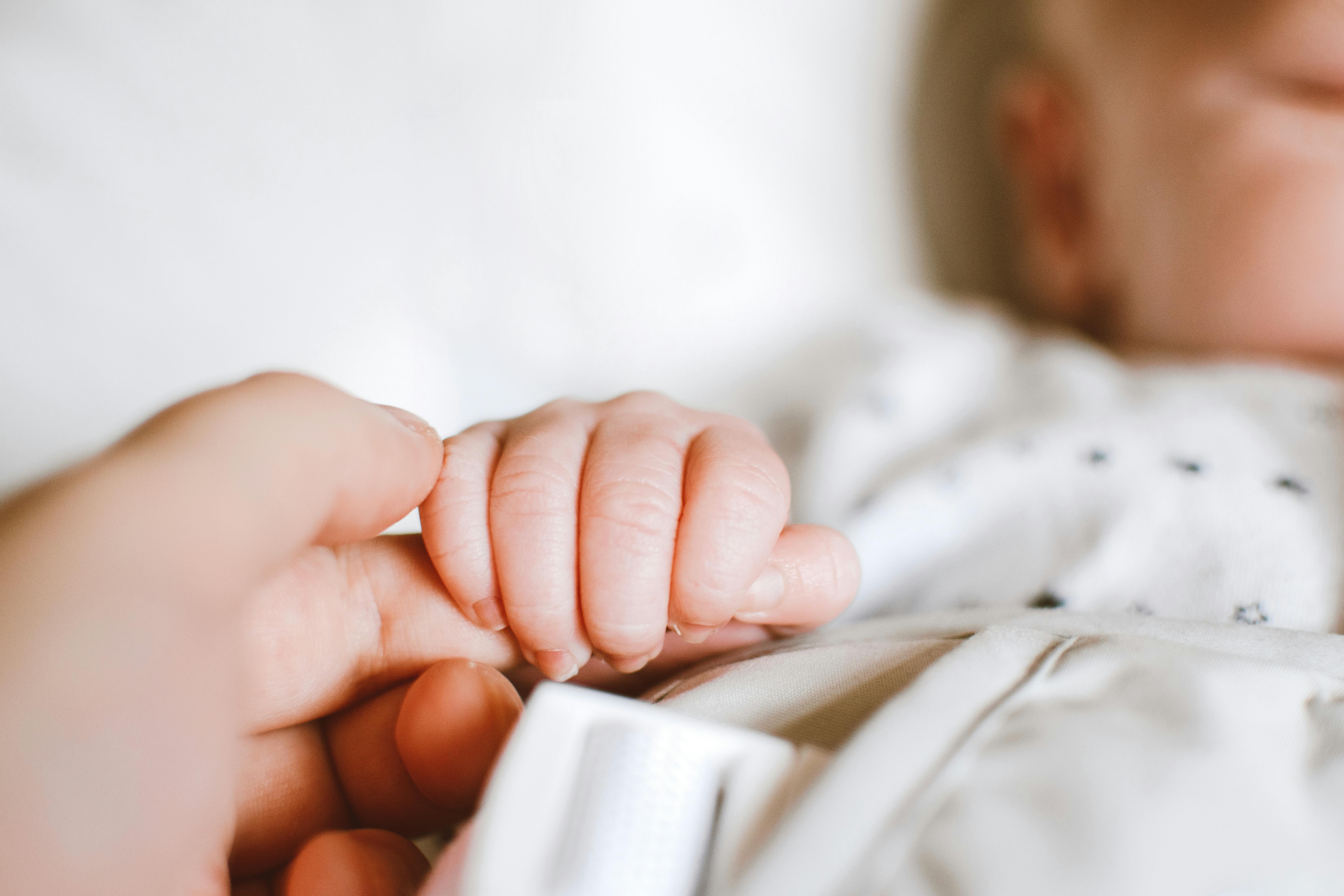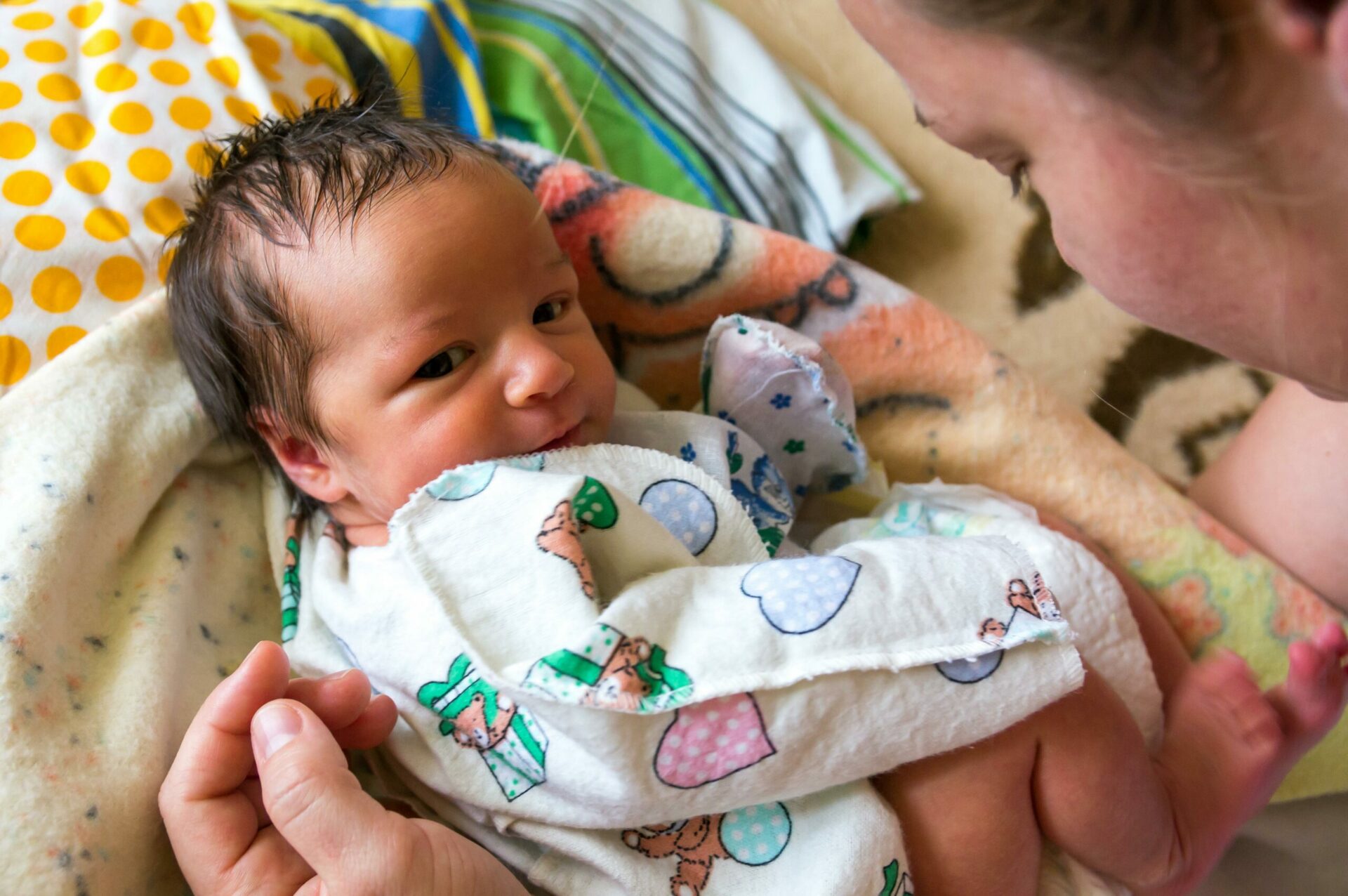Knowing if your baby is too hot or too cold while sleeping is an important part of keeping your baby safe and healthy. It’s essential that you check your baby’s temperature regularly to make sure that they are comfortable and not at risk of overheating. In this guide, we will cover the different ways you can check if your baby is too hot or cold while sleeping, as well as how to adjust the temperature in their room accordingly.To tell if your baby is too hot while sleeping, check for sweat on their forehead or the back of their neck. Also, feel their chest and back to see if they are hot to the touch. If your baby’s skin feels hot, take off some layers of clothing to help them cool down. Additionally, look at the room temperature; if it is too warm, open a window or turn on a fan.
Overheating in Babies
Babies are especially prone to overheating due to their inability to regulate their own body temperature. Babies tend to have a higher metabolic rate than adults, which means they produce more heat and are more likely to become too hot. This can be a serious issue that can lead to health problems for young children as their bodies are still very delicate. There are several reasons why babies may be at risk of overheating:
1. Overdressing: When dressing a baby, it is important to dress them appropriately for the weather. If parents or caregivers overdress the baby in warm clothing in cold weather or use too many layers, it can cause them to become overheated.
2. Hot Temperatures: Hot weather can cause babies to overheat quickly, as they cannot regulate their body temperature on their own as well as adults can. It is important to keep an eye on temperatures and make sure your baby is not too hot when outdoors or indoors.
3. Blankets: Using blankets or covers during sleep time can also lead to overheating in babies, especially when the temperature is already warm or when there are multiple layers of bedding used.
4. High Humidity: High humidity levels can also increase the chances of a baby becoming overheated as humid air does not allow heat to escape from the body easily and may cause a baby’s body temperature to rise quickly.
It is important for parents and caregivers to take steps such as dressing babies appropriately for the weather conditions and monitoring temperatures closely in order to prevent babies from becoming overheated and suffering from any potential health problems that could result from this condition.
Risk Factors For Overheating In Babies
One of the most common risks for overheating in babies is related to the environment. Warm temperatures, humidity, and lack of air circulation can all increase the risk of overheating. It is important to ensure that the room temperature where your baby is sleeping is comfortable and not too hot. Additionally, when dressing or swaddling your baby, be sure not to over-bundle or use too many layers as this can also increase their risk for overheating.
Other risk factors for overheating in babies include illnesses such as fever or infection, as well as certain medications that can cause a rise in body temperature. It is important to monitor your baby’s temperature regularly and contact your doctor if you have any concerns about their health.
Finally, there are some precautions you can take to reduce the risk of overheating in babies. Be sure to dress them appropriately for the weather and environment, keep their rooms at comfortable temperatures, avoid over-bundling them when swaddling or dressing them, provide adequate ventilation in their sleeping areas, and monitor their temperature regularly – especially during illness or when taking medication. By following these simple guidelines you can help keep your baby safe from the risks of overheating.
Signs & Symptoms Of Baby Overheating
It is important to be aware of the signs and symptoms of a baby overheating. If your baby seems to be uncomfortable or is sweating more than usual, it may be a sign that they are too warm. Common signs and symptoms of a baby overheating include: increased sweating, red and flushed skin, rapid breathing, fussiness, restlessness or difficulty sleeping, and feeling hotter than usual to the touch. If your baby is displaying any of these signs or symptoms of overheating, it is important to take steps to cool them down right away.
You should also pay attention to how your baby is dressed when trying to prevent them from getting too warm. Dress your baby in lightweight clothing that covers their arms and legs, but does not trap heat against their body. Make sure that the room temperature is comfortable without being too hot or cold. You can also use a fan in the room if it is too hot in order to keep your baby cool and comfortable. Finally, keep an eye on how active your baby is when playing; if they seem overly tired or sluggish it could be a sign of overheating.
Keeping Baby Cool During Sleep
During the summer months, it can be difficult to keep your baby cool and comfortable while they are sleeping. While there are many products available to help with this, there are also some simple tips that you can follow to ensure that your baby stays cool and comfortable during their sleep. Here are a few tips for keeping your baby cool during sleep:
1. Keep the room temperature low. The ideal temperature for a baby’s bedroom should be between 68-72°F (20-22°C). Keeping the room cooler will help keep your baby from overheating while they sleep.
2. Choose breathable fabrics for bedding and clothing. Natural fabrics such as cotton or linen are preferable to synthetic materials as they will allow air to circulate more easily around the body while keeping them warm and comfortable.
3. Dress your baby in lightweight clothing or no clothing at all if possible. This will help keep them cool and reduce the risk of overheating during sleep.
4. Use a fan in the room to circulate air and create an overall cooler environment in which your baby can sleep comfortably.
5. Keep windows open when possible, especially at night, to allow for ventilation in the room and to reduce humidity levels which can make sleeping uncomfortable for both you and your baby.
6. Keep an eye on your baby’s temperature by taking their temperature regularly throughout the day and night if necessary, especially in hot weather or when using a fan or air conditioning unit in their bedroom.
7. Make sure that you check on your baby often throughout the night to ensure that they are comfortable and not too hot or cold during their sleep time.
By following these simple tips you can help ensure that your baby remains cool, comfortable, and safe during their sleep time this summer!

Appropriate Room Temperature For Babies
Keeping the right temperature in a baby’s room is very important for their health and safety. Babies cannot regulate their own body temperatures like adults, so it’s important to make sure the room they’re in is neither too hot nor too cold. Generally, the ideal room temperature for a baby is between 16-20 degrees Celsius (60-68 degrees Fahrenheit). This can vary depending on factors such as the type of clothing your baby is wearing, the humidity level of the room, and even if windows are open or closed. If the room temperature exceeds this range, it can lead to overheating which can be dangerous for babies. It’s also important to ensure that your baby isn’t exposed to drafts in their sleep environment as this can cause them to become too cold.
It’s a good idea to use a thermometer to monitor your baby’s room temperature regularly. Additionally, you should also check how hot or cold your baby feels by feeling their back and neck area with your hand. If you feel that they’re too hot or too cold, you should adjust their clothing or bedding accordingly. If necessary, you may want to use an air conditioner or fan to maintain a comfortable temperature in your baby’s bedroom. Just make sure that any fans are placed away from your baby and not directly on them as this could cause them to become chilled or even ill.
Monitoring Baby’s Temperature
When it comes to monitoring your baby’s temperature, it is important to be aware of the signs and symptoms that may indicate a fever or other illness. In most cases, the best way to monitor a baby’s temperature is with a thermometer. A digital thermometer is the most accurate and easy to use. It should be placed in the ear or under the arm for an accurate reading. If you are using an oral thermometer, make sure it is thoroughly cleaned before use. Additionally, it is important to keep track of your baby’s vital signs such as heart rate, breathing rate, and oxygen levels.
It is also important to pay attention to your baby’s behavior when monitoring their temperature. Look for signs such as increased irritability or lethargy that may indicate a fever or other illness. It is also important to pay attention to any changes in appetite or frequent crying as these can be signs of illness as well. Finally, if you notice any skin rashes or redness on your baby’s body, this may be a sign of infection and should be checked out by a doctor immediately.
By keeping track of your baby’s temperature and other vital signs regularly, you can identify any changes that might indicate an illness early on and seek medical advice if necessary. This can help ensure that your little one stays healthy and happy!
Cooling Down a Baby’s Body Temperature
When a baby has a fever, it can be very alarming for parents. Fortunately, there are several ways to help lower a baby’s body temperature. It is important to speak with your pediatrician if your child has a fever that lasts more than three days or if the fever is above 102°F (39°C). Here are some safe and effective methods to help lower a baby’s body temperature:
Give the Baby Plenty of Fluids
Encouraging your baby to drink plenty of fluids can help reduce their temperature. Water, diluted fruit juices, and pedialyte are all good options. Giving your baby too much liquid at once can cause them to vomit, so offer small amounts at regular intervals.
Dress Your Baby in Light Clothing
Dressing your baby in lightweight clothing can help regulate their body temperature. If possible, dress them in cotton clothing that covers them from toes to neck without being too tight or restrictive. You may also want to keep their bedroom cool by opening windows or running fans.
Give Your Baby a Lukewarm Bath
Giving your baby a lukewarm bath can help reduce their body temperature. Make sure the water isn’t too cold or hot and use only mild soap and shampoo without any additional fragrances or dyes if possible. Afterward, dry them off with light towels and cover them with lightweight blankets.
Put Cold Compresses on Their Forehead or Wrists
Using cold compresses on either the forehead or wrists of babies can help bring down their body temperature quickly. Use damp washcloths soaked in cold water and wrung out before placing them either on the forehead or wrists for up to 10 minutes every few hours.
By using these methods, you should be able to safely lower your baby’s body temperature naturally without having to use medication unless recommended by a doctor. It is always best to speak with your pediatrician if you have any questions or concerns about how best to care for your child when they’re sick.

Conclusion
It is important to keep an eye on a baby’s temperature while sleeping, as their ability to regulate their own body temperature is still developing. To ensure a baby is comfortable and safe, parents should check the room temperature, dress the baby appropriately for the environment, and monitor the skin temperature of the baby. If a baby feels hot to the touch and exhibits signs of overheating such as sweating or damp hair, then immediate steps should be taken to lower their body temperature. The most effective way is to remove layers of clothing and place a cool cloth on the baby’s forehead or back. It is also vital to ensure that any blankets used are light and breathable. By following these steps, parents can be assured that their child is sleeping comfortably without any risk of overheating.
In conclusion, it is important for parents to be aware of how to tell if baby is too hot while sleeping. By monitoring a child’s room temperature and dressing them appropriately for the environment, checking their skin temperature regularly and being aware of any signs of overheating, parents can ensure that their child is comfortable and safe when sleeping.




